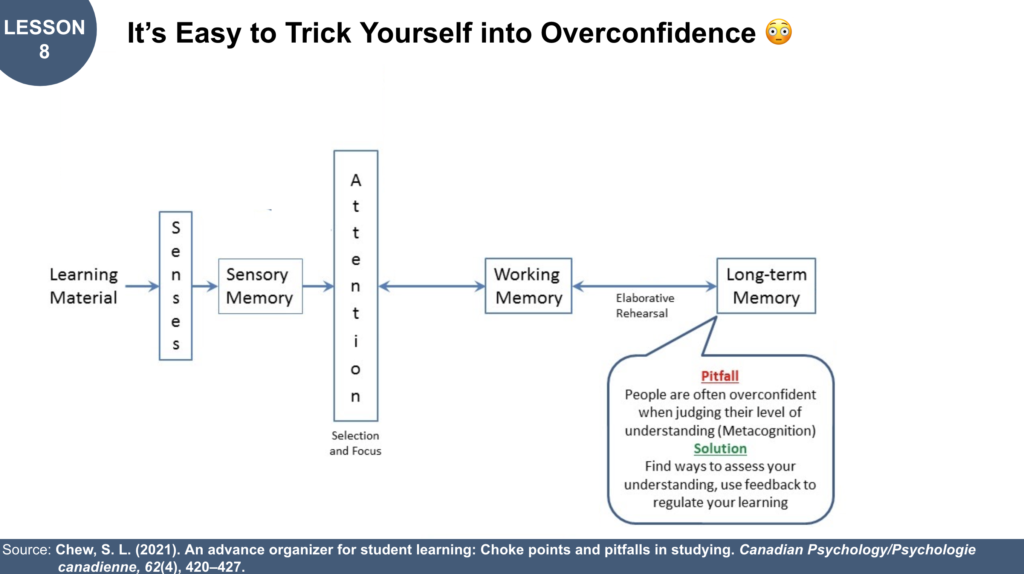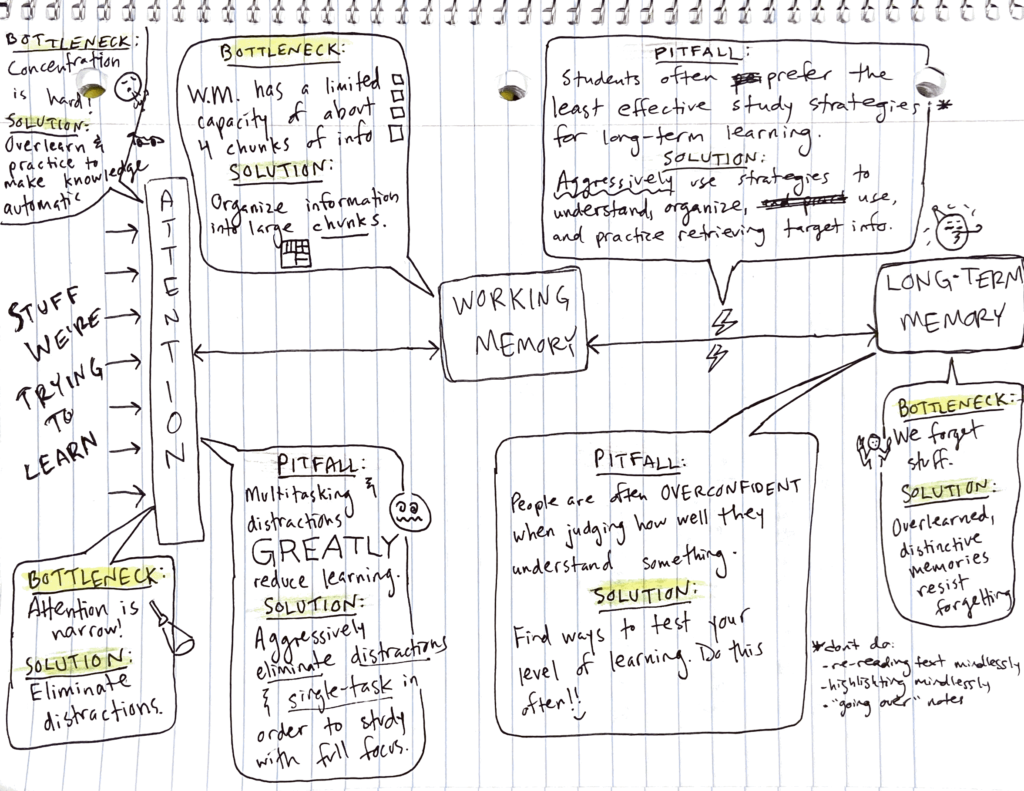Hey there, colleague! What follows is the last of a series of mini-lessons that teach secondary students how to learn more effectively. It's part of a series, which you can access right here.
When we teach students about learning, we empower them to work smarter and get better results for their effort. This is massively important for cultivating the five key beliefs beneath student motivation.
Without further ado — here's today's post! -DSJR

All right students, guess what!? It's our LAST DAY of LEARNING about LEARNING.
Well, that's probably not true, right? That'd be silly. Why would we ever stop learning about one of the greatest human superpowers that there is?
But it IS our last day in this series of mini-lessons looking at Dr. Chew's pitfalls and bottlenecks.
So, you know the routine! As you get out your notes, try to recall from memory with your partner every bottleneck and every pitfall we've looked at so for — and, because I'm feeling generous, super bonus swag points if you can recall any solutions!
Bottlenecks:
- Attention is narrow — so eliminate distractions.
- Concentration is hard — so overlearn and practice to make knowledge automatic.
- Working memory is limited — so organize information into chunks.
- We forget stuff — but overlearned, distinctive memories resist forgetting.
Pitfalls:
- Multitasking and distractions GREATLY reduce learning — so aggressively eliminate distractions and single-task in order to study with full focus.
- Students often prefer the least effective study strategies — so aggressively use strategies to understand, organize, use, and practice retrieving target information.
And nowwwwwwwwwwwwwww 

Remember when we were talking about how looking over your notes or highlighting the text is a bad learning strategy? Back with yesterday's Pitfall? One reason that's true is because those are passive strategies — they don't require much effort, and they don't really require you to understand anything. But another reason is that they make you overconfident — you start to feel like you “get” what you're learning about, but what's actually happening is you're just becoming familiar with what the text looks like.
The way to fix this overconfidence really quickly is to test yourself! Let's write it down, and then I'll share a couple examples that relate to your classes.

All right — so, how can we test ourselves? Lots of ways. Here are some:
- Ask your teacher for a practice test or a set of practice questions for the test. And then test yourself with those questions!
- Ask your teacher how questions will be asked on the test, and then practice using the information you've learned in a way similar to how you'll have to do it on the test.
- For example, in my class, I like to include several short answer questions (SAQs) on every unit assessment. This lets you and I know if you really understand the unit's essential questions. And I always pull these SAQs from our lesson essential questions. So on each of our daily lesson slides, you've got yourself a nice study guide that you can use for practicing SAQ answers.
- Use end of chapter review questions in any textbook or curricular resources that are part of your class.
- Get a group of your peers to make up some test questions for one another. Then, gather together in person or remotely and have a test question party!
I know, I know — that last one is kind of silly. But it's also something else: SMART.
The only way to know if you know something is to test yourself. And what's cool is that the act of testing yourself is actually a good method for overlearning material and making it automatic. In short: self-testing solves a lot of the problems we've looked at in this series.
Overview of what we've learned
Now let's take a look at our overview list and get our pitfalls added in there. Remember, this is on a different page in your spiral notebook.

And now let's also flip back to our diagram and just gaze at its glory for a minute.

This is a really great time to sigh loudly, with deep contentment.
Go ahead.
Ahhhhhhhhh.
Yes! There you go. Just like that.
Now — on to the next thing!
Where do we go from here? A closing note to colleagues
Note from Dave: This article is the last in a series of mini-lessons designed to improve student motivation by cultivating the Effort and Efficacy beliefs.
The heart of this series is the idea that if we're not regularly shepherding our students on their learning journeys — teaching them how to learn as effectively as possible — then we're for sure leaving motivational potential untapped. For sure. There's no way to have an optimally motivated class of learners who have not had a chance to learn more about learning in that class.
We gotta teach 'em how to advance toward mastery. While that won't look the same in all of our classes, in a lot of our classes Dr. Chew's diagram can really help.
That's why I shared it.
And now, time to go take a nap because that was a lot of writing.
Teaching right beside you,
DSJR
P.S. More on the series here; more on the idea of the five key beliefs here.



Leave a Reply